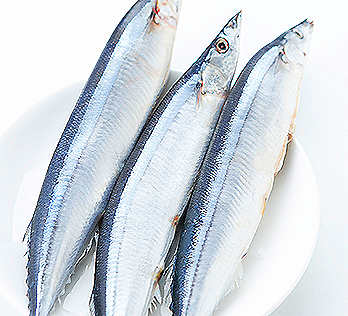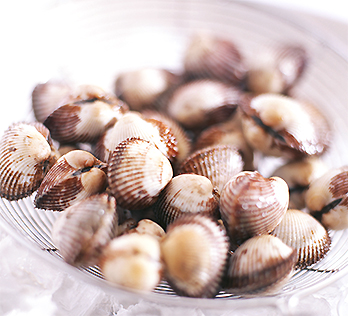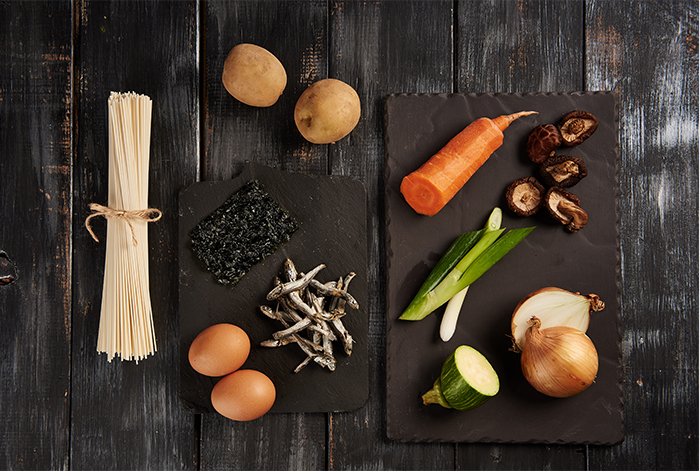
Ingredients
1) Grains
Rice is the chief grain in Korea, used with almost every meal, in porridges, rice cakes and desserts. Wheat flour is used in making noodles and served at feasts. Barley is used in bibimbap-style dishes and in various processed foods with wheat. Buckwheat flour is used for noodles, dumplings, jelly and cookies. Foxtail millet, Chinese millet, and African millet are also used in cooking rice, porridges, cakes and cookies.
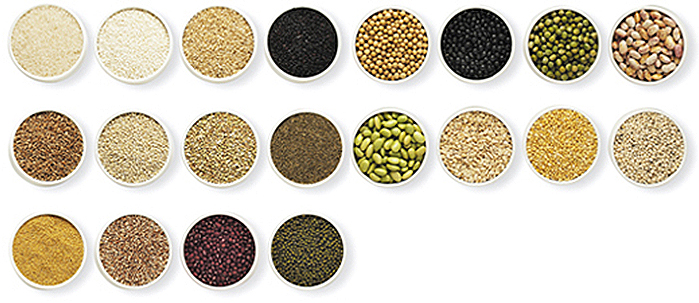
2) Beans
Beans are used extensively in Korean cooking; in particular soybeans, red beans, mung beans and peas. Beans are used with rice to create cakes, steamed food or porridges, sprouted for use in banchan (side dishes) and bibimbap and also as ingredients for fermented foods such as soy sauce and soybean paste.
3) Potatoes
Potatoes and sweet potatoes may be substituted for rice and are used in cakes and fried food. They are also used to produce starch flour and other processed products.
4) Vegetables
There are various vegetables grown throughout the seasons. They are used as ingredients in soup, kimchi, salad, namul (wild greens) and pickled vegetables, which are an important source of vitamins, minerals and fiber.
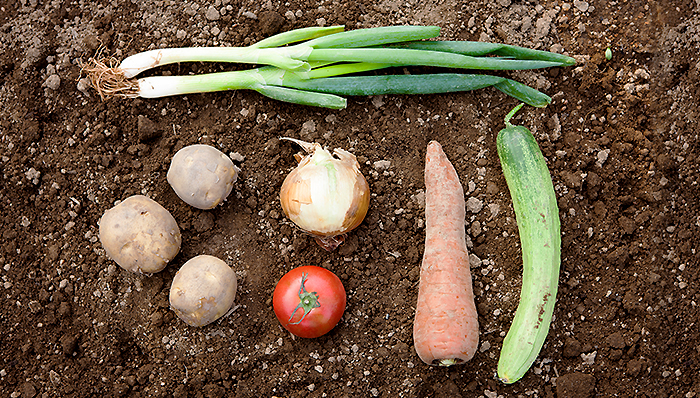
5) Mushrooms
Pine mushrooms, brown oak mushrooms, oyster mushrooms, rock tripes and snow puff mushrooms are the most edible mushrooms in Korea. Brown oak mushrooms have a good flavor and are often used in braised, steamed, pan-fried and stir-fried dishes. Rock tripes are often used as garnish.
6) Fish and Clams
Because Korea is surrounded by sea on three sides, various fish and clams are used in cooking. There are white-flesh fish such as sea bream, flatfish, yellow corvina, and red-flesh fish such as mackerel, as well as abalone, mussels, squid, short necked clams, oysters, blue crab among others. They can be braised, simmered in soy sauce, grilled, steamed or cooked in soups.
7) Seaweed
Various seaweeds such as laver, brown seaweed, tot (brown algae), and sea lettuce are used in soups, fried foods, and salads. Seaweed is a notable health food that is rich in minerals and low in calories.
8) Meat
In Korea, various meat dishes have been developed, such as grilled and braised meats, as well as dried meat from poultry and livestock. Beef can have different textures and flavors according to its age, sex, amount of physical exercise, cut, and the level of fermentation. A suitable meat should be selected for each particular recipe. Tenderloin and sirloin are good for grilling and frying. Brisket, shank, gristle, tail and chuck short ribs are the best for soups and braising. Top round, shank and ribs are good for steaming and braising. Top round is the best cut for serving raw, dried or braised in soy sauce. Pork is often used for grilling because pork is more tender than beef, and has different fat distributions according to the cut. Chicken is often used in grilling, frying, steaming and soup because the meat is leaner.
9) Eggs
Chicken eggs and quail eggs are often pan-fried or steamed. They are also used for coating fish or vegetables before frying. They may be fried for yellow or white egg garnishes.
10) Fruits
Fresh fruits such as apples, pears, peaches and strawberries may be soaked in wine or vinegar. Persimmons and jujubes may be dried rather than soaked. Hard shell nuts such as chestnuts, walnuts, gingkoes and pine nuts are used as garnish for gangjeong (sweet rice puffs), steamed foods, gujeol-pan (platter of nine delicacies), sinseollo (royal hot pot) and tea.
Seasonings
Seasonings enhance taste and flavor, and extend the storage life of foods. Yangnyeom, Korean for seasoning, literally means “consider medicine.” The flavor of Korean food very much depends upon the selection and quantity of seasonings. There are various seasonings for saltiness, sweetness, sourness, spiciness and for additional flavors and colors.
1) Salt
Salt is the most common source of the salty taste in food. It is classified as horyeom, jaeyeom, and table salt according to the size of the crystals. Horyeom is coarse bay salt used when making kimchi, bean sauce or bean paste and marinated fish. Jaeyeom is a finer salt also called kkotsogeum (flower salt). It is white and clean, and used as an ordinary salt for seasoning food. Table salt is the finest salt, used for seasoning food at the table.
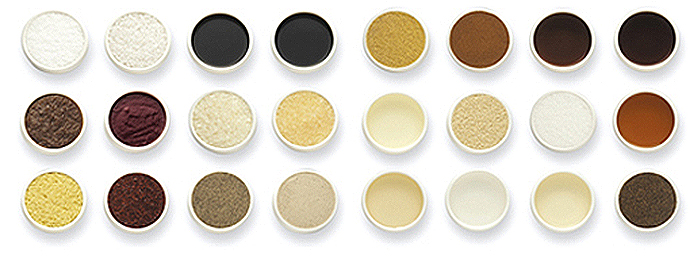
2) Soy sauce
The word for soy sauce in Korean, ganjang, means “salty.” Soy sauce is made of fermented beans and is used for seasoning food. It adds saltiness, a savory taste and coloring. Soy sauce is used differently depending on the cooking method. Soup, jjigae (stew) and namul are seasoned with gukganjang (concentrated soy sauce, 24% salinity). Jinganjang (less salty soy sauce, 16% salinity) is good for braising, slicing and simmering food and also for meats. Seasoned soy sauce or vinegar soy sauce may accompany fried fish and other fried food.
3) Soybean paste
Doenjang (soybean paste) literally means “thick paste.” It is a soybean paste made of the fermented solid ingredients of soy sauce. Doenjang is usually used in cooking stews such as doenjang-guk (soybean paste soup) or tojang-guk (soybean paste soup flavored with dried vegetables and meats). It is also served as a condiment for ssam (leaf wraps), or for namul and jang-tteok (wheat flour pancakes with doenjang).
4) Red pepper paste
Red pepper paste is used for stews, soups, fried food, salads, grilled food and namul. It is also used in making fried red pepper paste sauce for side dishes, and served with raw fish or mixed noodles.
5) Green onion
Green onion eliminates strong odors from fish and fatty foods. It enhances the taste of food with its unique flavor. They range in size from large to medium and thin. Large green onions are used for seasoning. Finely chopped medium green onions are added to soups such as seollongtang (ox bone soup), gomtang (beef bone soup) and haejang-guk (hangover soup). Thin green onions are added to kimchi.
6) Garlic
The volatile compound called “allicin” in garlic gives it its spicy taste, and eliminates the strong odors from fat, fish and vegetables. Garlic is also an important seasoning for kimchi. Minced garlic is used for seasoning. Garlic is usually sliced or shredded for flavoring or garnishing, although whole cloves may also be served.
7) Ginger
Ginger has a unique flavor and spicy taste which eliminates the strong odors from fish and the fat in pork and chicken, and enhances the taste of food. It is minced, sliced, shred or juiced for seasoning.
8) Ground red pepper
Ground red pepper is made of dried red pepper. It is classified by size as coarse, medium and fine, and classified by spiciness as very spicy, medium and mild. Coarse ground red pepper is used for making kimchi, medium size is also used for kimchi and seasoning, and fine ground red pepper is for red pepper paste or salads.
9) Ground black pepper
Ground black pepper eliminates the strong odors from fat and fish with its pungent taste and flavor, and it stimulates the appetite. The more pungent black pepper is used for meat dishes while the milder, white pepper is used for fish. Whole peppercorns are used in making Korean pear pickles, broths and thick soups.
10) Mustard
The mustard seeds in mustard contain the enzyme myrosinase, which produces a unique flavor and spicy taste when fermented with water at about 40℃. A mustard sauce with salt, sugar and vinegar is used to dress salads such as gyeojachae (assorted meats and vegetables with mustard sauce) or naengchae (chilled salad).
11) Cinnamon
Cinnamon has a unique flavor that enhances the taste of food. Powdered cinnamon eliminates the strong odors from fatty food. Cinnamon provides a special spice and color in cinnamon punch, rice cakes and Korean cookies.
12) Edible oil
Varieties of edible oil include sesame oil, perilla (wild sesame) oil and soybean oil. Sesame oil and perilla oil have a unique flavor that stimulates the appetite. They add a nutty aroma to food and prevent moisture evaporation when grilling meat or fish.
13) Sesame salt
Sesame salt is made by washing sesame seeds and stir-frying and grinding them with a small amount of salt while hot. This process produces a sweet taste and flavor. It is used to season namul and steamed or braised food.
14) Sugar, starch syrup, honey, glutinous starch syrup
When sugar, starch syrup, honey or glutinous starch syrup are added, they provide sweetness and color to the food. They also make the food soft and glutinous by keeping it moist for a long time. Therefore, they are used for seasoning food, and used in making Korean cookies, such as gangjeong, junggwa (fruit- or flower-shaped honey cookie), and yumilgwa (deep-fried cookie of flour and honey).
15) Vinegar
Vinegar is made by fermenting grains or fruit and it adds tartness to food. As a seasoning, vinegar gives a clear and cool taste to the food, stimulates the appetite and aids with digestion. It also eliminates the strong odors from fish, makes fish fillets firmer, and acts as an antiseptic.
16) Chinese pepper
Ground Chinese pepper eliminates the strong odors from fish and fats in fish or meat soups, and it also breaks down the fats.
17) Salt-fermented seafood
Salt-fermented seafood has been marinated with salt and fermented. It is an important side dish since it has a lot of protein. It harmonized salty, sweet and savory flavors beautifully when making kimchi or served as a side dish on the dining table.

